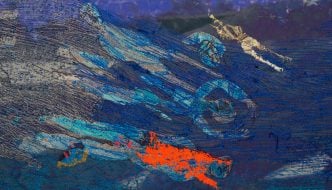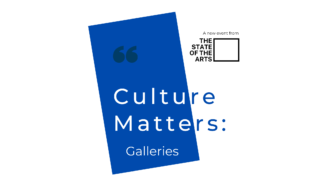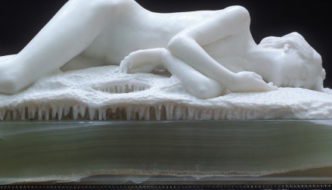
I first came across the work of Idris Khan almost exactly five years ago during what was my first visit to Manchester. Attending a university open day I stumbled across the Whitworth Art Gallery and the exhibition they were showing at the time, Dark Matters. The exhibition, staged in part-darkness, explored the impact of scientific, digital and mechanical invention on visual culture, and focused on the artists exploring themes of time, illusion, and memory.
The photographic prints of overlaid book pages by Idris Khan stuck with me. The three works, Sigmund Freud’s The Uncanny, Friedrich Nietzsche … Thus Spake Zarathustra and Every page…From Roland Barthes’ ‘Camera Lucida’, took subjects that would normally entail extensive consideration over time and compressed them into a single image that can be looked at in one moment. Khan used a methodical and clearly defined process of layering images on top of each other over and over again to create abstract, incoherent imagery.
Khan describes it as a ‘kind of a fantasy and a nightmare rolled into one – the wish fulfilment of apprehending a whole book in an instant, but the fear and anxiety of never being able to understand what the book wants to tell us’.
Five years on the Whitworth is again home to works by Idris Khan. Repetition and layering are again their themes. Sheet music for Stravinsky’s The Rite of Spring has much the same effect as his older works but with other new works he moves away from digital process of layering to a more physical approach with a more palpable result. A series of five, all black paintings, The Death of Painting, echo Kazimir Malevich’s Black Square (1913). By writing in thick oil stick repeatedly, Khan creates an incomprehensible square of black. He moves off the canvas, and out of the frame for a new monumental wall drawing True belief belongs to the realm of real knowledge. Here layered text is again used, but by removing the square or rectangular, enclosed and bordered, format of his other works, it has a much more explosive effect.
By expanding beyond the surface of the picture plane and across the space of the gallery wall the artwork nearly fill the viewers visual field. The repetition of the text entangles the viewer, the scale confronts them and the layers suck them in, evoking mysterious and unsounding depths. This development in Khans work, going beyond the frame, for me gives his works new complexities and can evoke more with their material and tangible repetition than his digital works ever could.




Comments